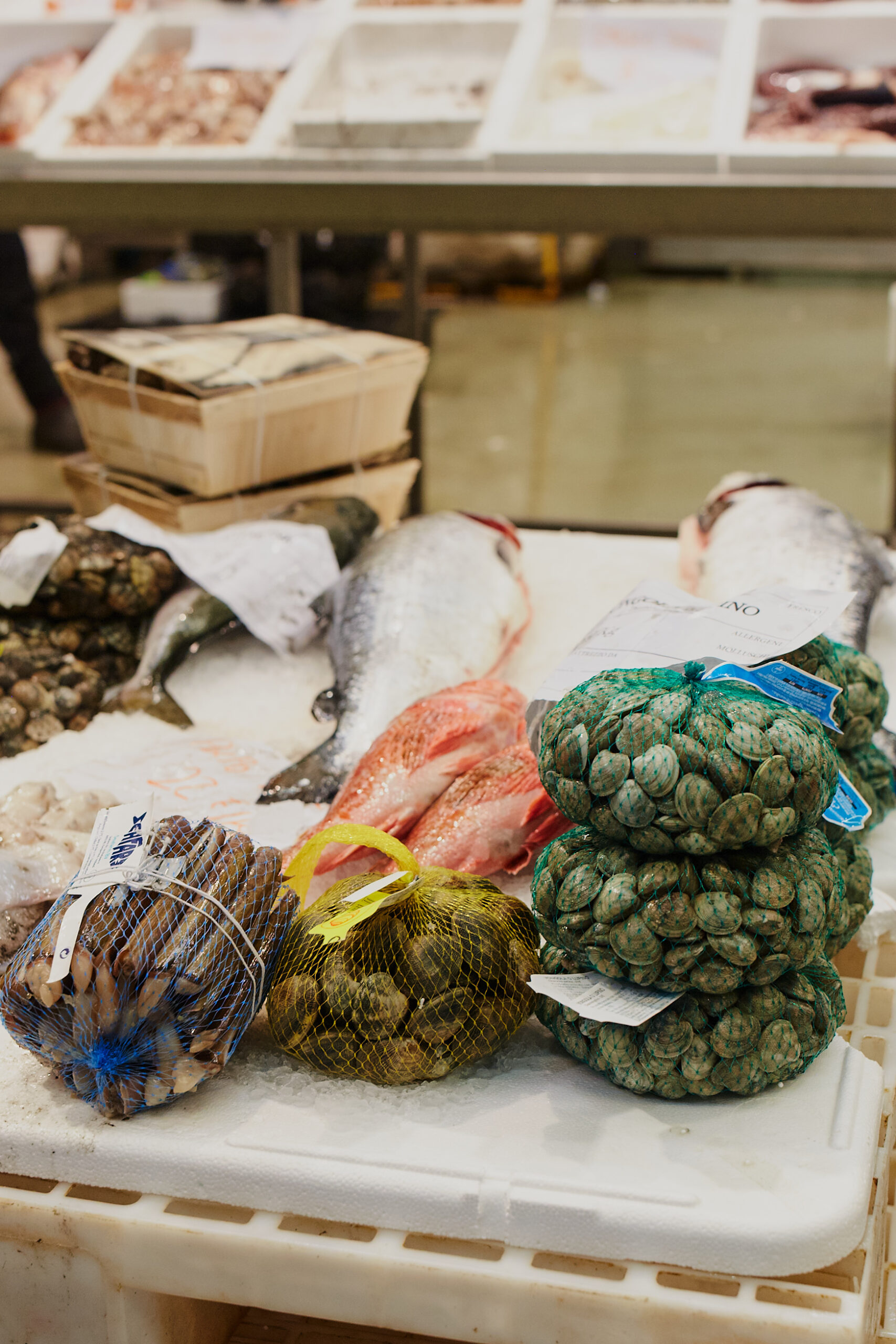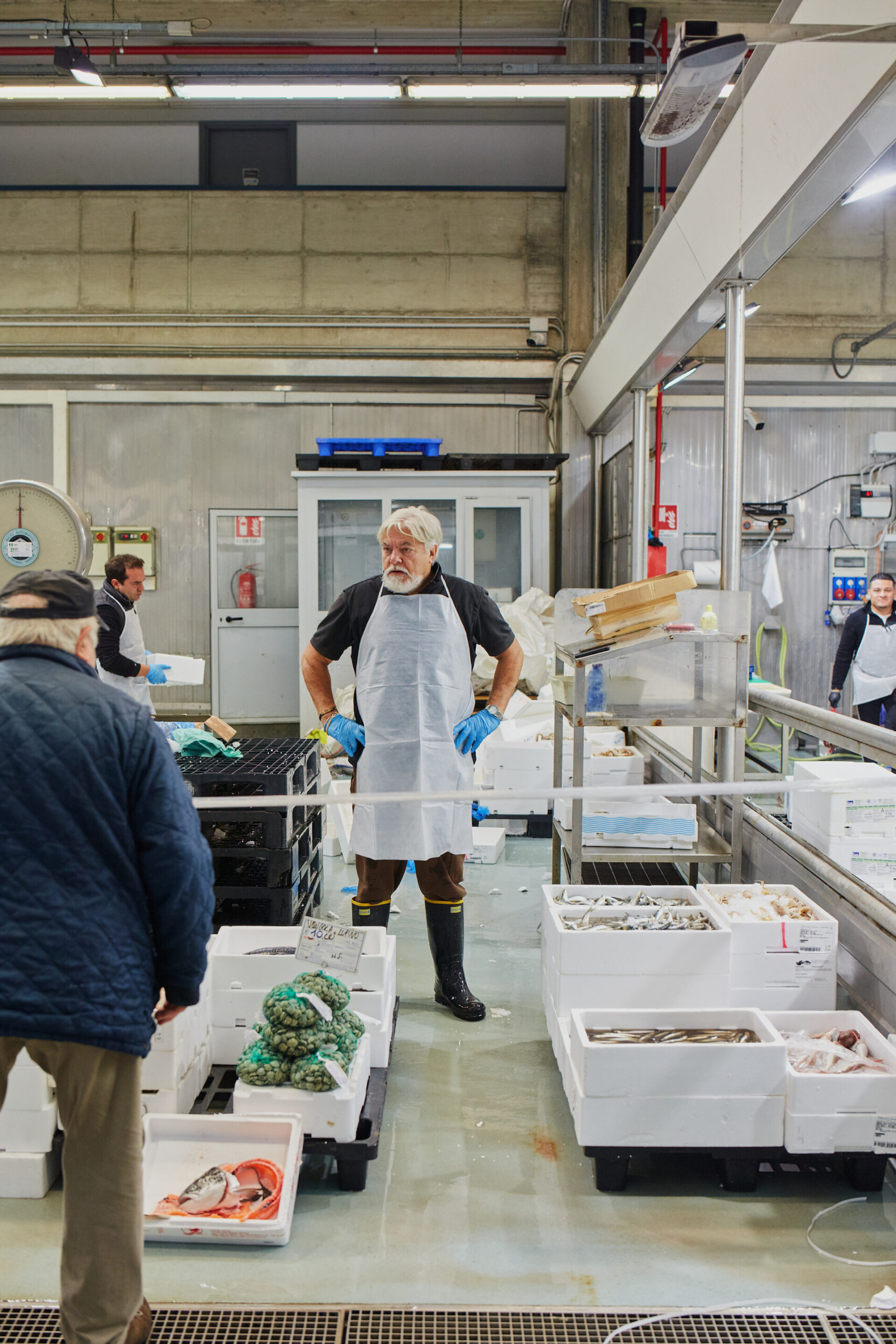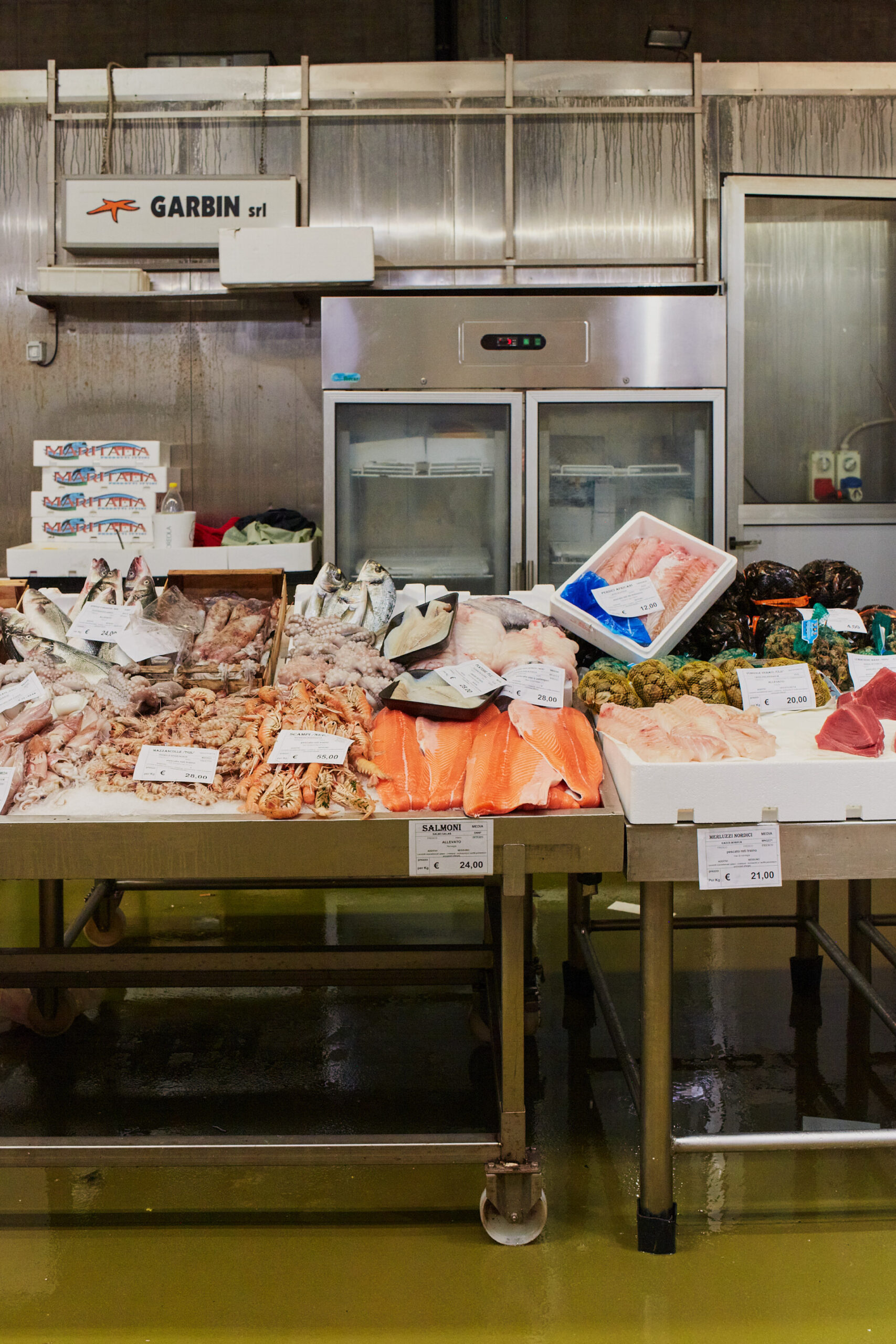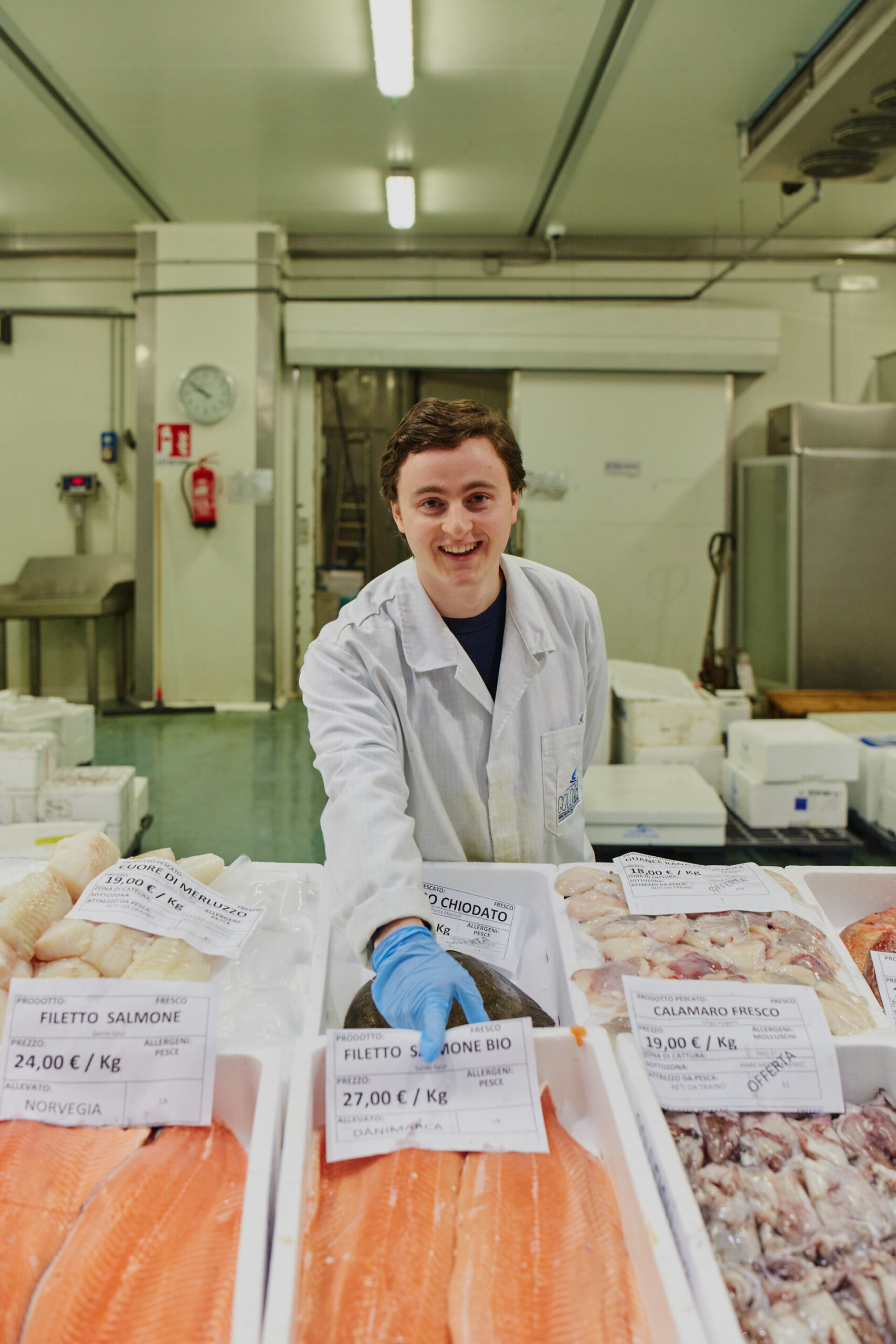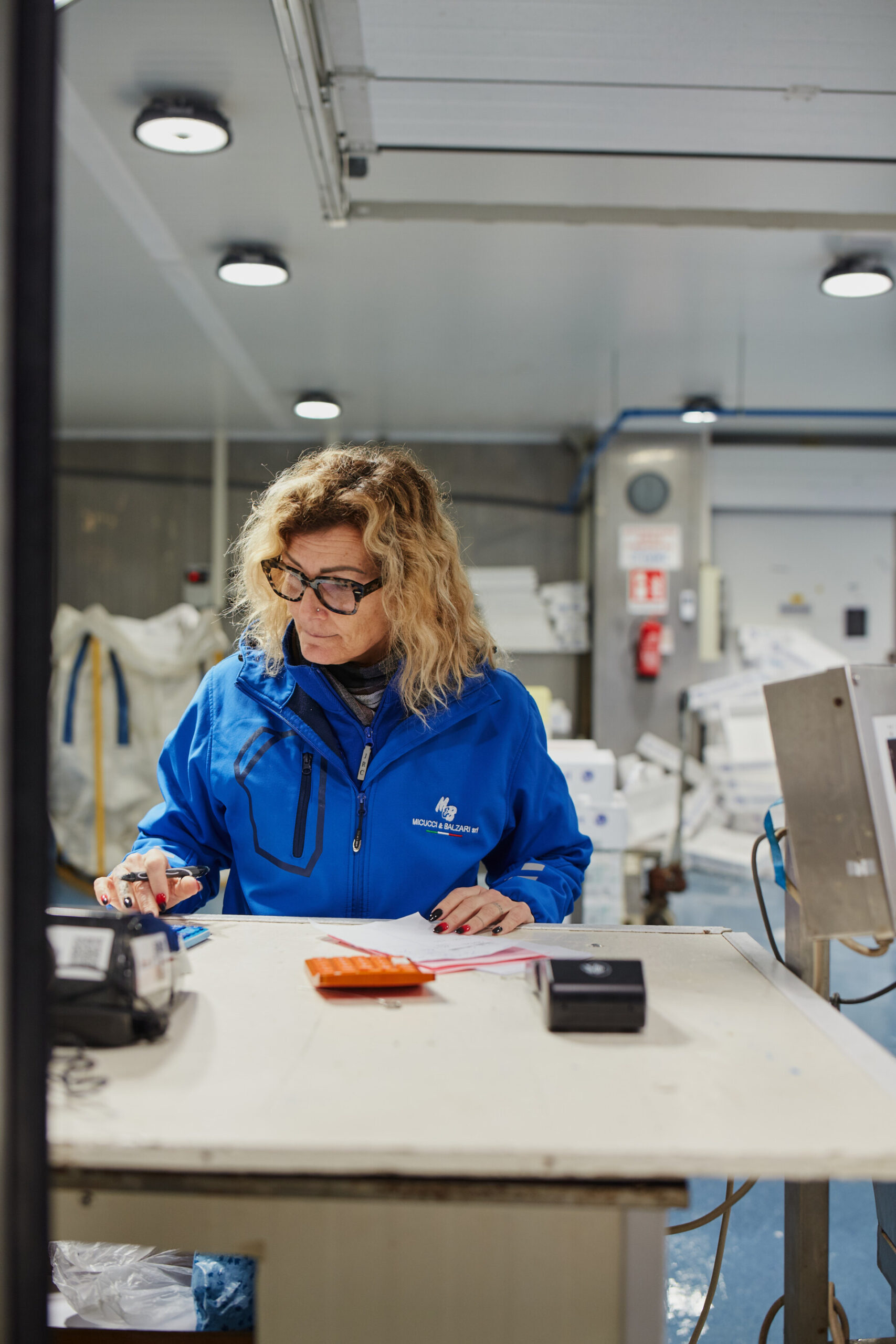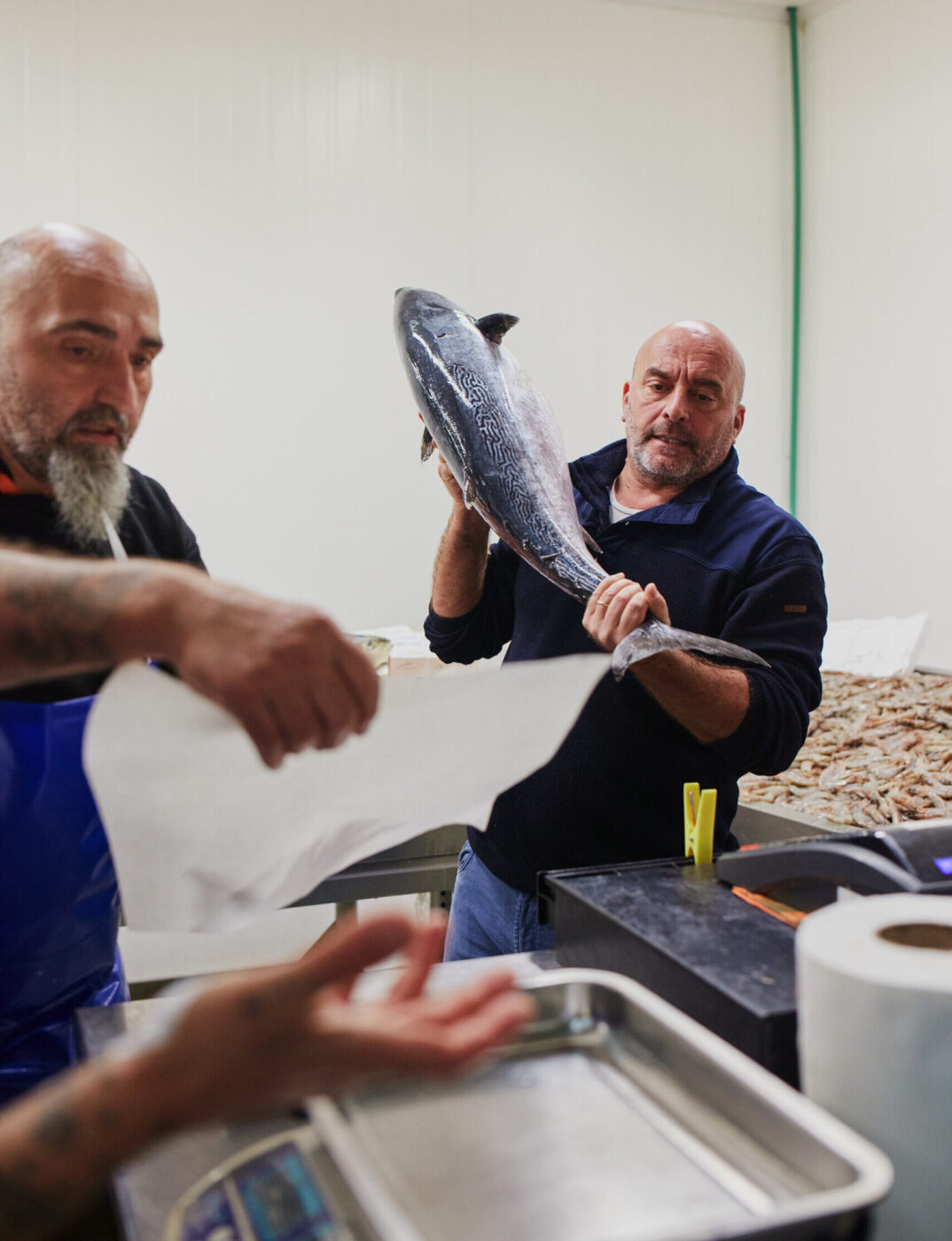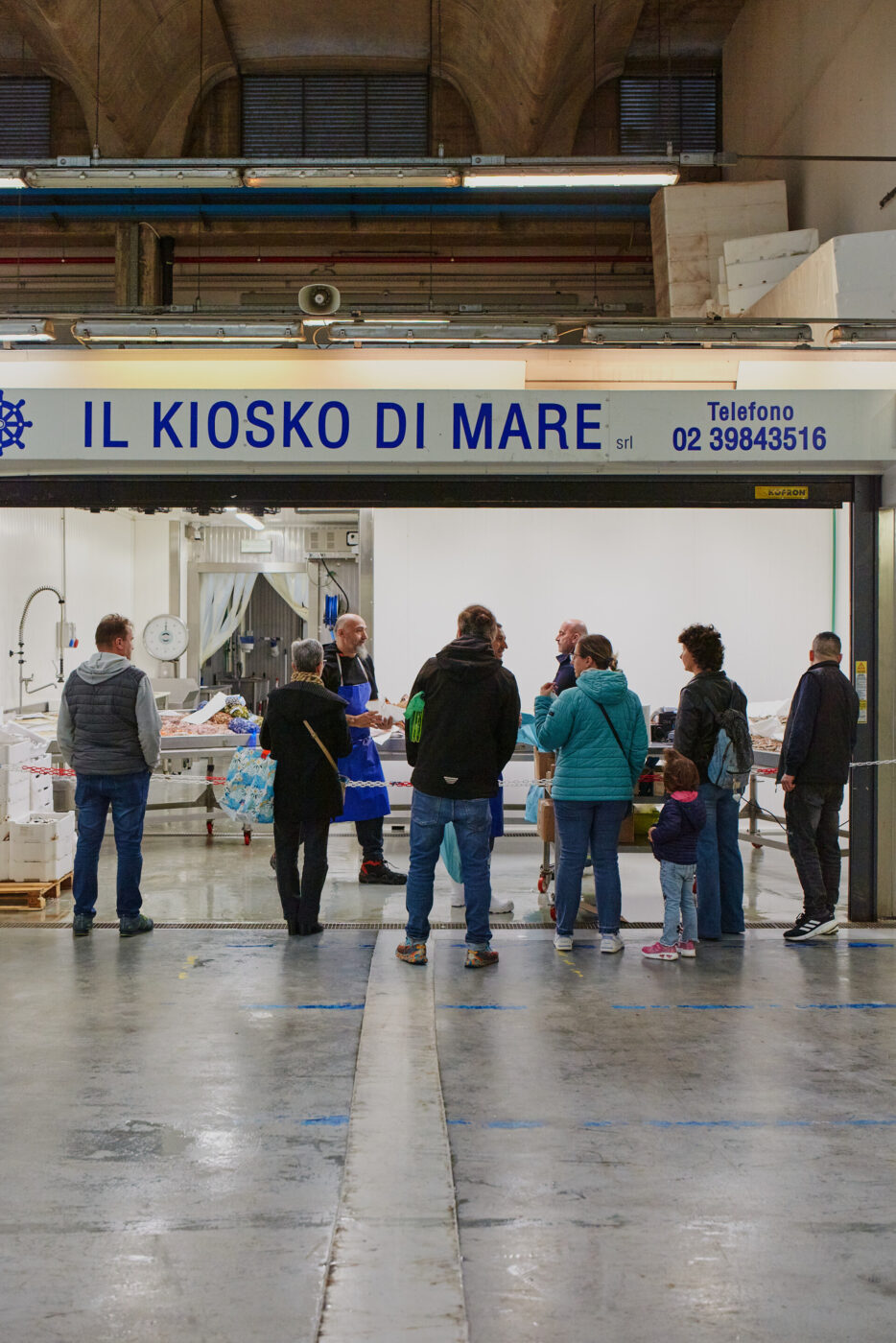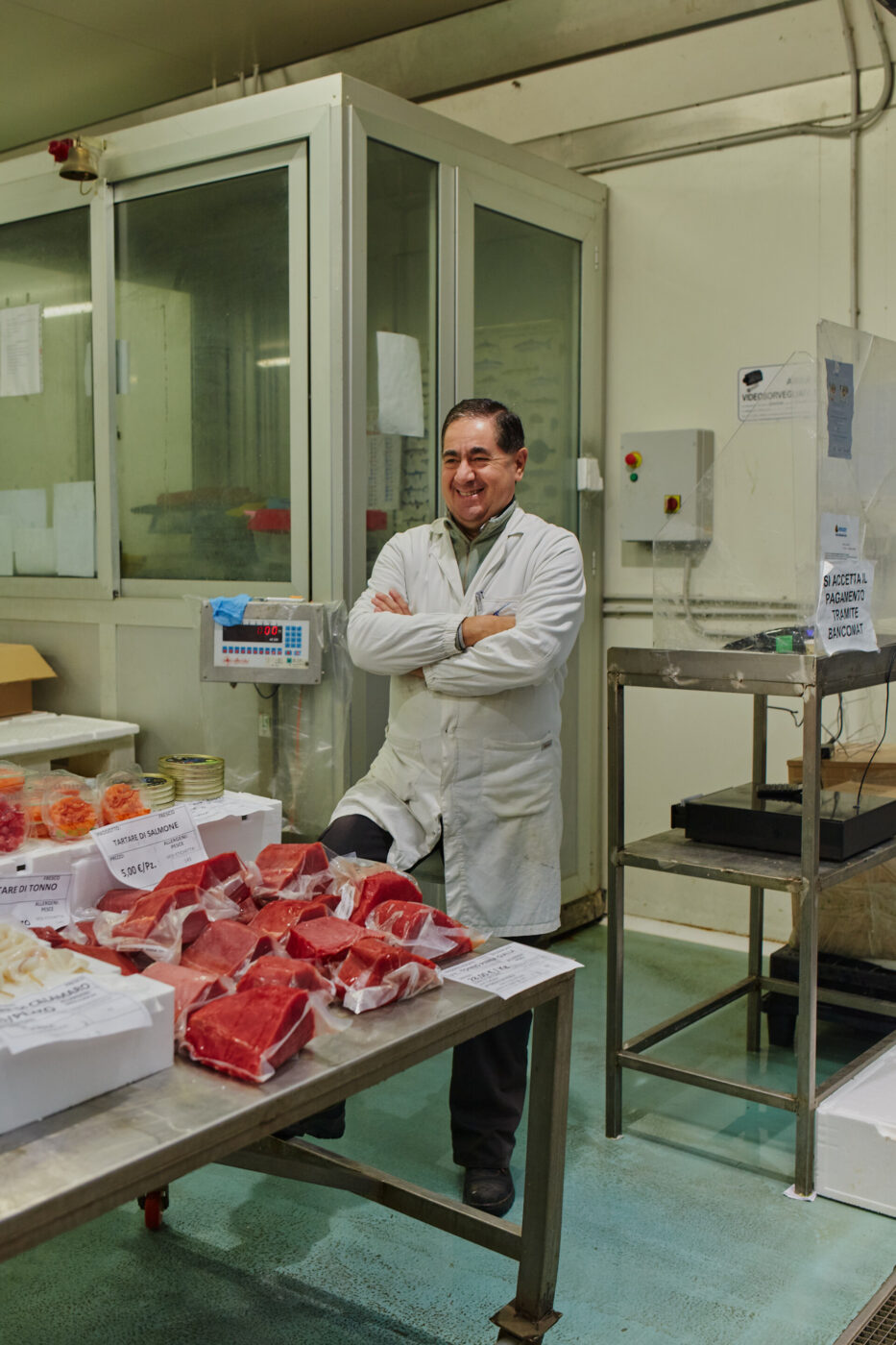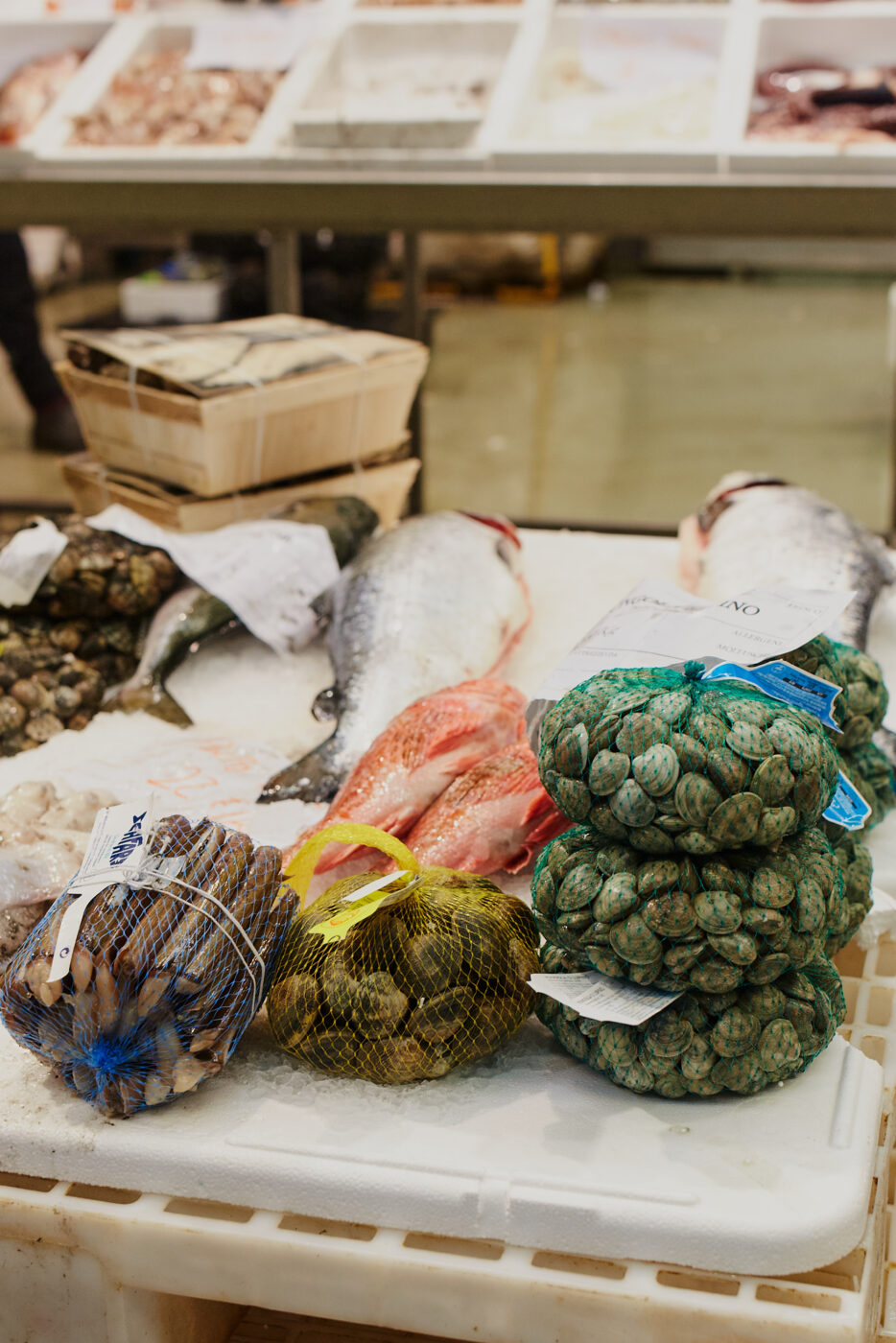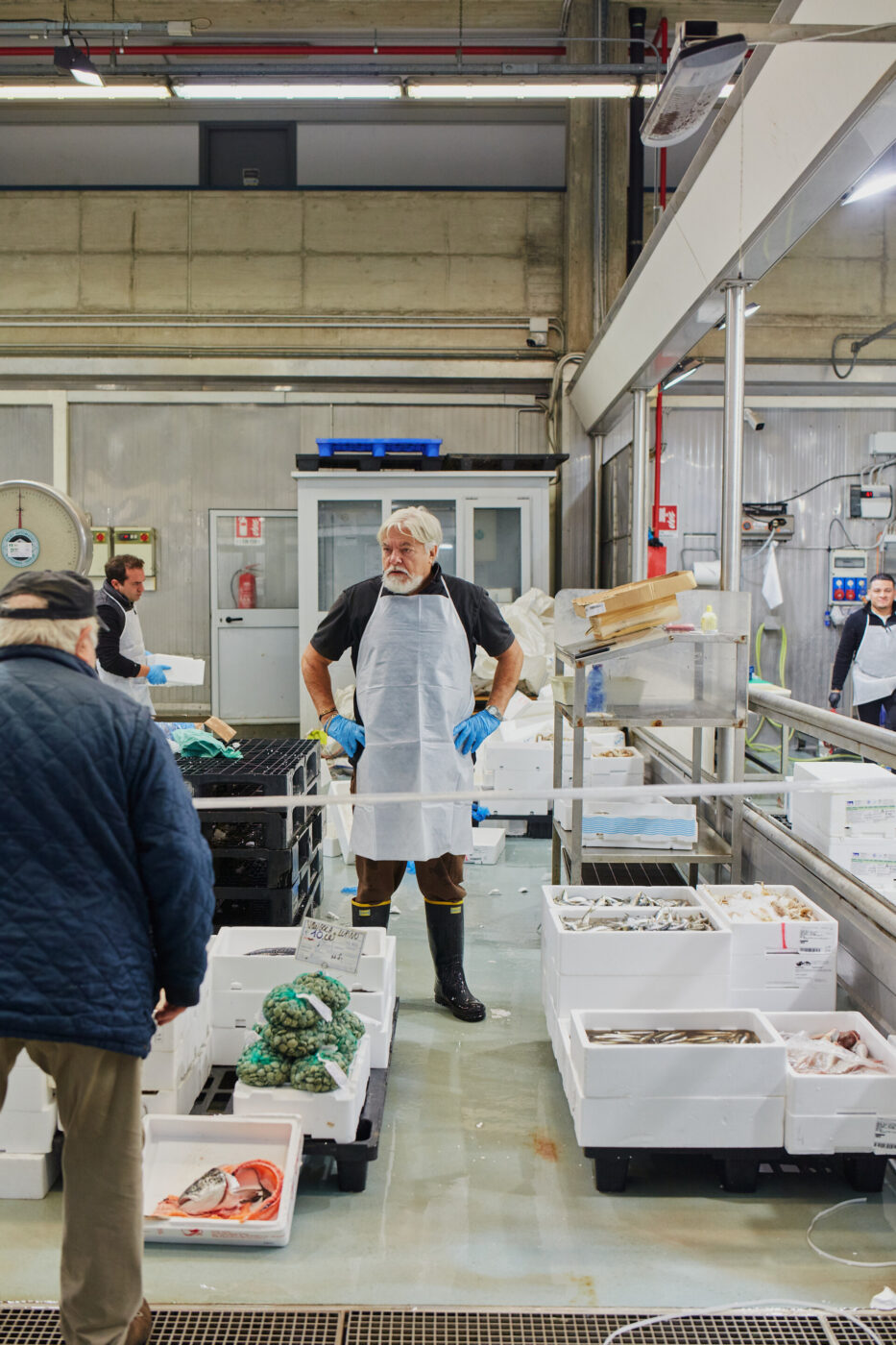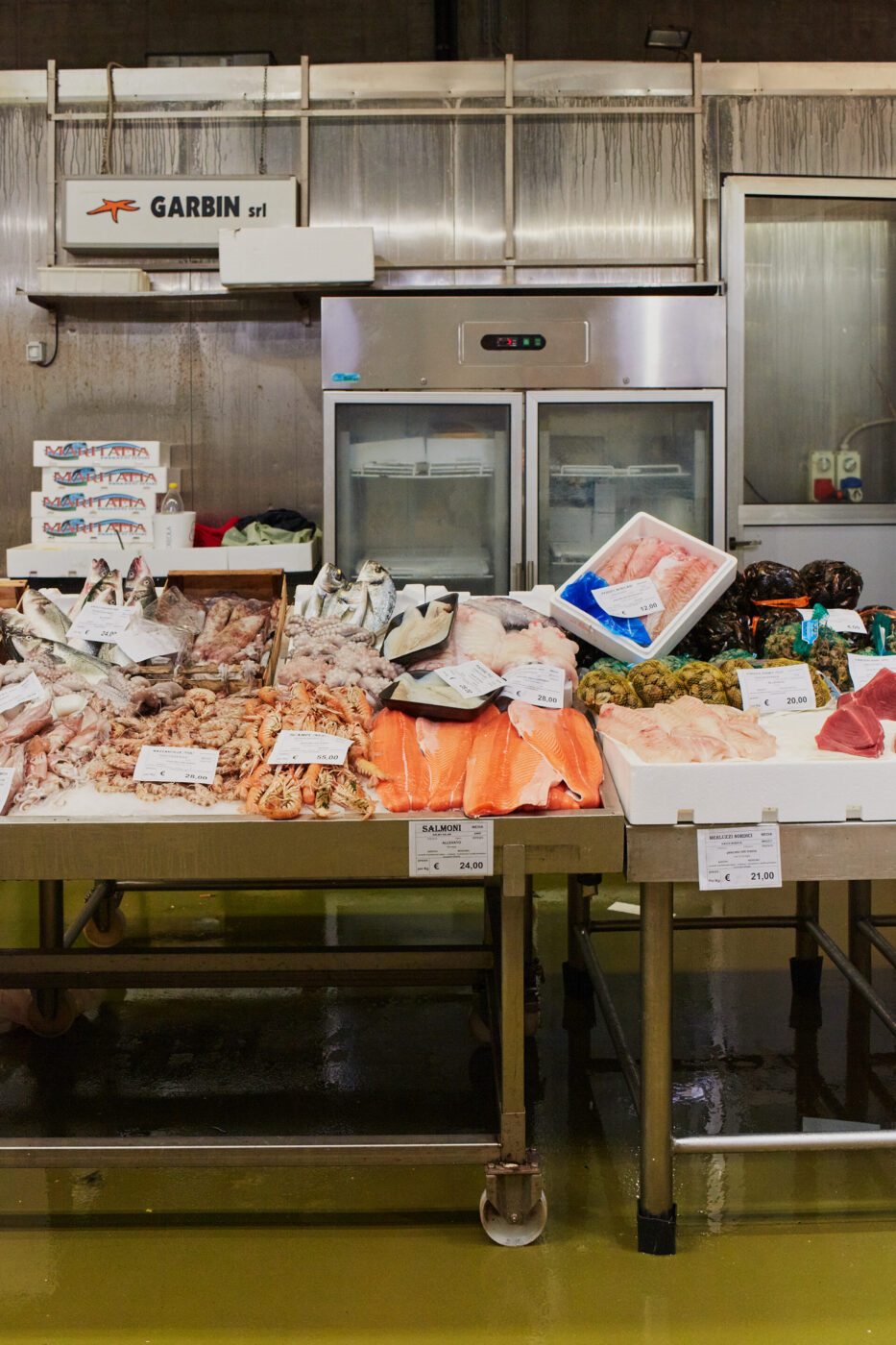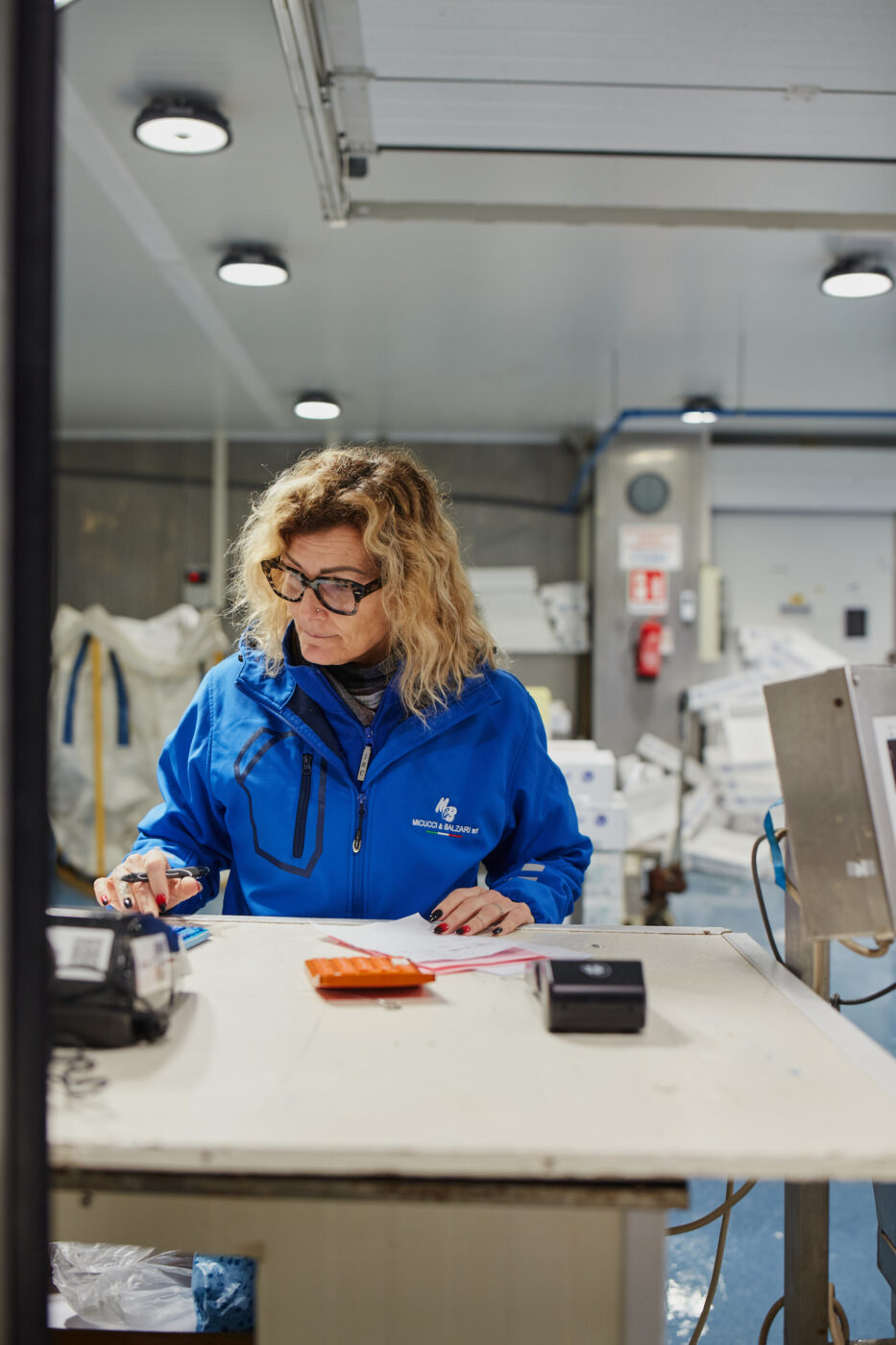It’s nighttime in Milan, and the slick streets are deserted–everywhere except in the Calvairate district, the eastern outskirts of the city, where trucks and vans come and go, bars are open, and bright lights illuminate the wholesale markets. It’s an immense area, a city within a city that comes alive in reverse while the rest of the city still sleeps. Every day, more than 25,000 tons of fresh products arrive and depart by the early hours of dawn, six days a week, every week of the year.
Once you cross the gates that separate this microcosm from the rest of the metropolis, bicycles, carts, and scooters zoom through the aisles of Italy’s largest fruit and vegetable market. An expanse of fruit and vegetable stalls arrives here from all over the country and around the world: buckets of oranges; tons of tomatoes in every shape, style, and color; exotic fruits and vegetables from fields afield. Everyone wants their pick of the litter and is in a hurry to go–just like everywhere else in Milan. Though the municipality may be known as the capital of fashion, design, and innovation, it’s also the second-largest agricultural municipality in Italy, with 3,700 hectares of cultivated land in the province and a Mercato Ortofrutticolo that is the largest in Italy both in terms of size and in quantity of products sold–over 1 million tons per year. Adjacent to it, warehouse after warehouse, the meat market, the flower market, and the pride of the complex: a 10,000-square-meter fish market that wins Milan another record.
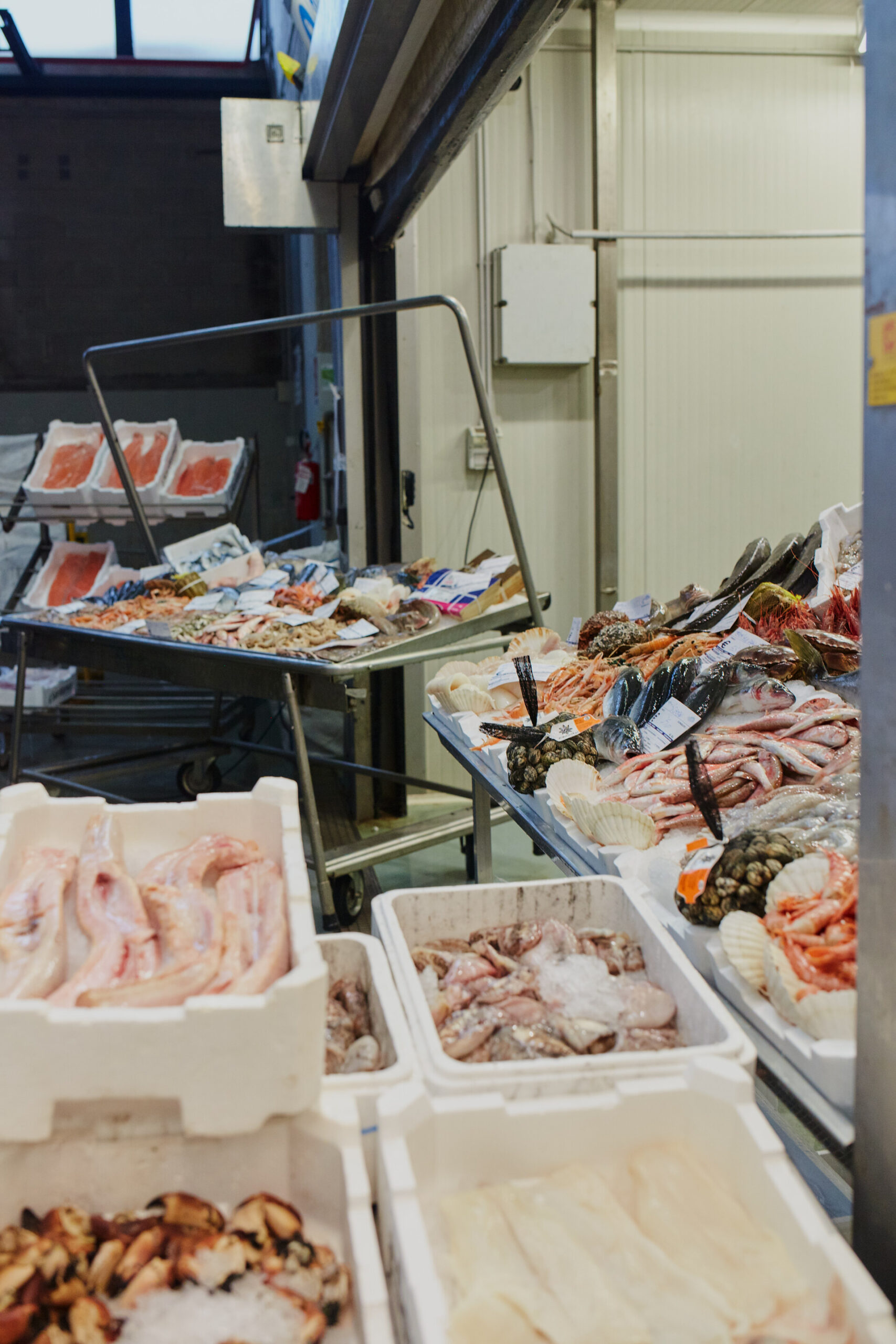
Photography by Christina Holmes
People have always said that Milan has the best fish in Italy–a bold claim considering there’s no want of locales along this country’s seaside, with seafood-based cuisines to boot, while Lombardy’s capital is 200+ km away from the closest point on the water. Though the city may lack coastal access, what it does have is the most important mercato ittico, or fish market, in the country: 300 species sold by about 20 wholesalers, all under the watchful eye of quality control service.
“Those who sleep don’t catch fish,” proclaims the large sign above the entrance door. It’s 4 AM when the market opens its doors to buyers, but work has been underway for hours to receive and arrange the goods to be sold.
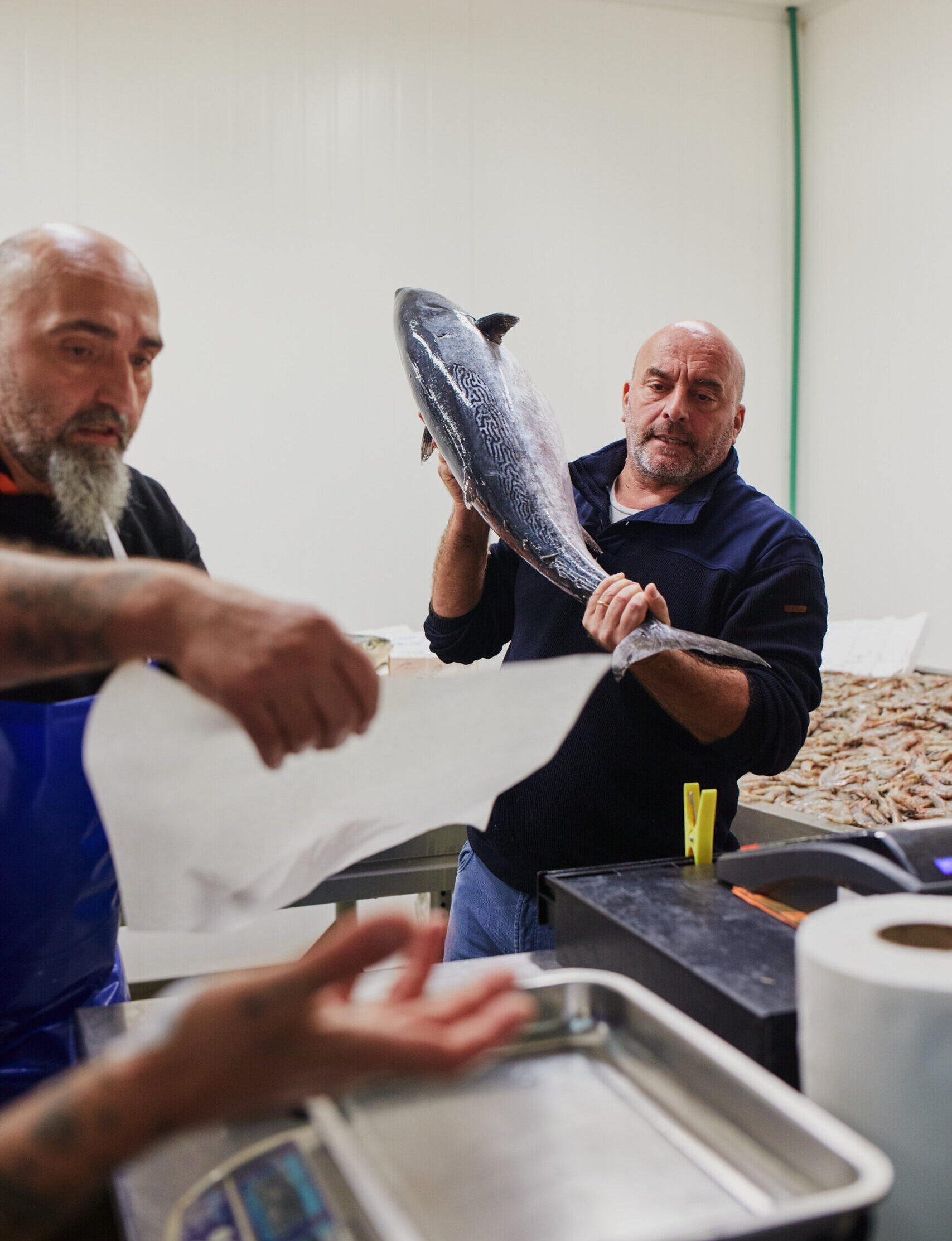
Swordfish dominates the counters; fish crates are neatly stacked and visible. Mussels, sea bass, sea bream, and salmon are the most sold species, and there are those who proffer oysters and mussels, cod and stockfish. You can find fresh, frozen, or thawed fish; prized fish caught with a hook and farmed fish, from inexpensive bluefish to pricey red tuna. 65 to 70% of the fish sold at the Milan market comes from abroad, while the remaining 30 to 35% is of domestic origin, which is why proximity to the airport is more important than proximity to the sea: taking the tangenziale (the circular highway surrounding the city), in a matter of minutes, the seafood has arrived on Lombroso Street.
Here, fish specialists, who have been buying and reselling for decades, wear white coats, aprons, and rubber boots, showcasing the crates, discussing prices, and compiling purchase orders. Nobody is a fisherman, but you can breathe the same spirit of a port.
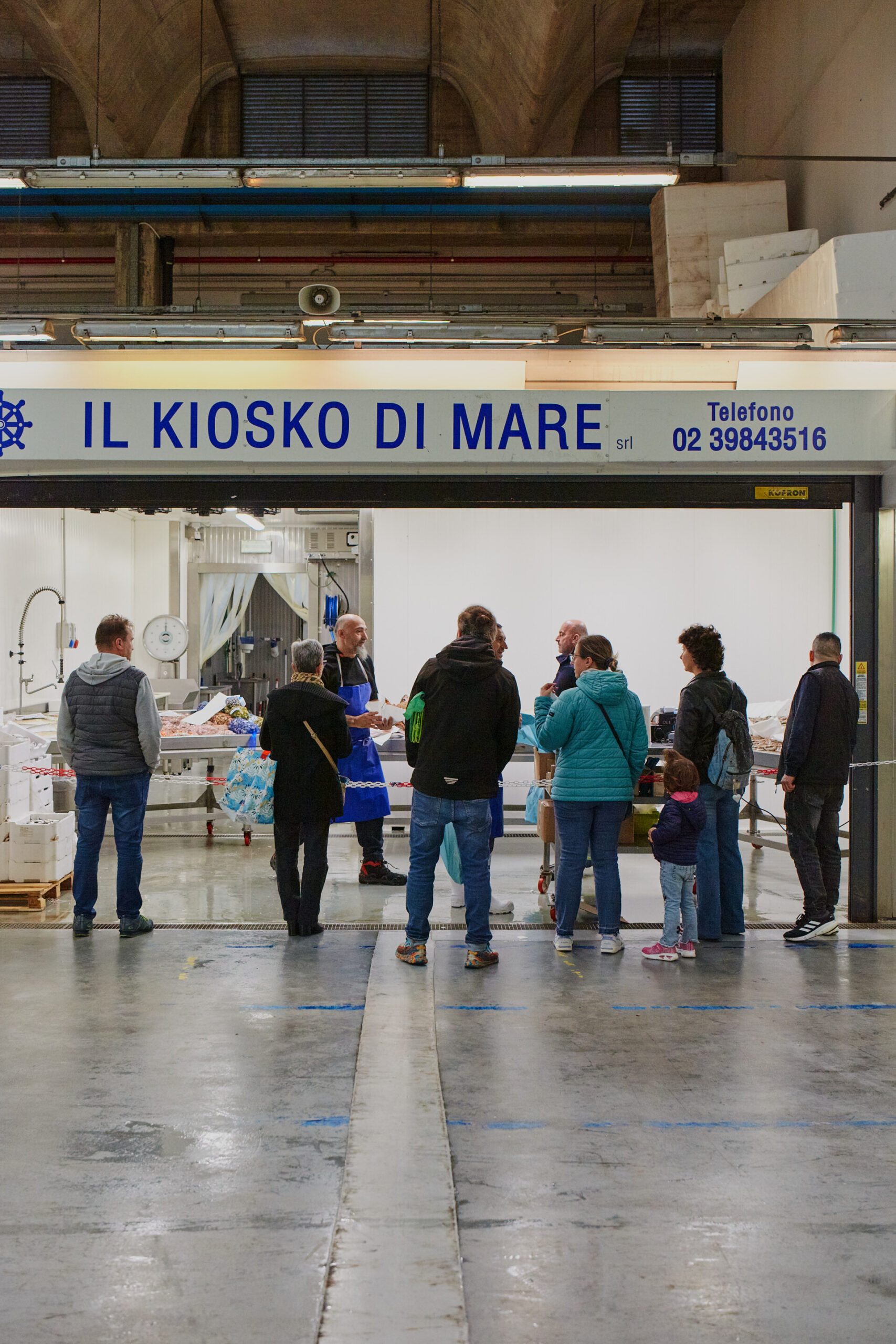
If the ware of choice is farmed fish, the purchase is completed in just a few seconds: price, size, origin, and sold. For caught fish, it’s a completely different, and more involved, matter, especially for the valuable varieties. Amberjacks weighing eight kilos are displayed like trophies, inspected and touched as if they were Shih Tzus at a Pet Pageant. The brokers, hooded in heavy clothes, head to the city to resell and, on their pallets, you can glimpse the crates reserved by the well-known names of the Milanese restaurant scene. By 6 AM, the ruckus has died down; at 10 AM, everything is closed and cleaned, while in the offices, work continues and orders for the next day are placed. At midnight, the doors reopen to welcome new seafood, and it all begins again.
Fish has become a beloved food for the people of Milan, but this is a relatively recent phenomenon–in sync with the timeline of this fish market, whose stalls moved from near the Centrale station to this megalithic space in 2000. In the 90s, the consumption of fish began to grow, along with the need for more space to manage its trade, while just a decade prior, fresh fish was a luxury, unable to be found in supermarkets; Milanese mainly consumed aquatic fare in the form of fish sticks and frozen products. That is, until levels of wealth began to rise while fish prices declined, thanks in part to the spread of fish farms. And, with the introduction of sushi to Milan, “going to eat fish” officially went from a special occasion to a typical choice alongside costoletta and risotto.
But is it true that Milan has the best fish in Italy? Everyone at the market confirms it over coffee. The bar in the center of the market is a meeting point for those who work here, and, after shopping, it’s bustling with sellers and customers breakfasting with coffee and pastries. Black and white photos of the old fish market and the faces of the stall protagonists, often passed down from father to son over the decades, adorn the walls.
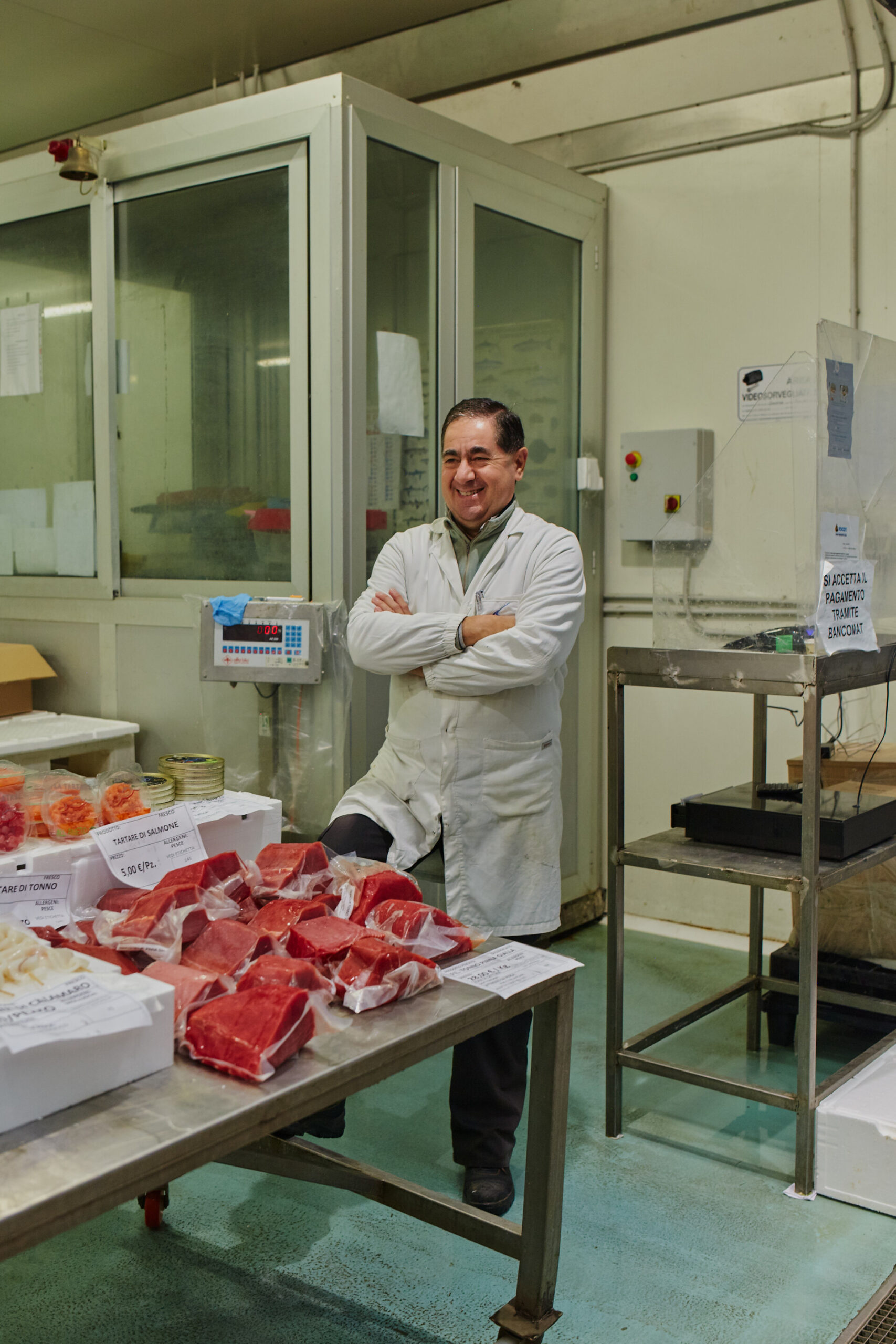
“Where the sea doesn’t reach, the fish do,” they explain, and, here in the city, there are customers willing to pay a fortune for them. Red prawns at 65€/kg, North Sea soles at 38€/kg. Langoustine, tuna, fresh sea bass, and dentex are highly sought after by fine-dining establishments–of which Milan has more than anywhere else in Italy–and chefs hunting for the best raw materials in the market. That’s why the Milan fish market’s wholesalers are the ones who manage to secure the best merchandise at the fish auctions scattered across Italy’s ports, and thus why the well-known saying, in the shadow of the Madonnina and in the middle of the Po Valley, that one eats as well as by the sea is not a mere rumor.
Milanese locals confirm; while, during the weekdays, the wholesale markets are closed to the general public, worlds apart from city center, on weekends, they open to individuals who, for generations, have been coming here every week. Couples, the elderly, families–it’s a city ritual, a procession of Milanese crowding the streets around the market on Saturday mornings. It’s all hustle and bustle, not of trucks and lorries but of cars and carts. People load up with crates of fruit, vegetables, and fish and return home to cook, a bouquet of flowers in hand. Then, the market closes; no work on Sundays, and it reopens the minute it turns Monday.
